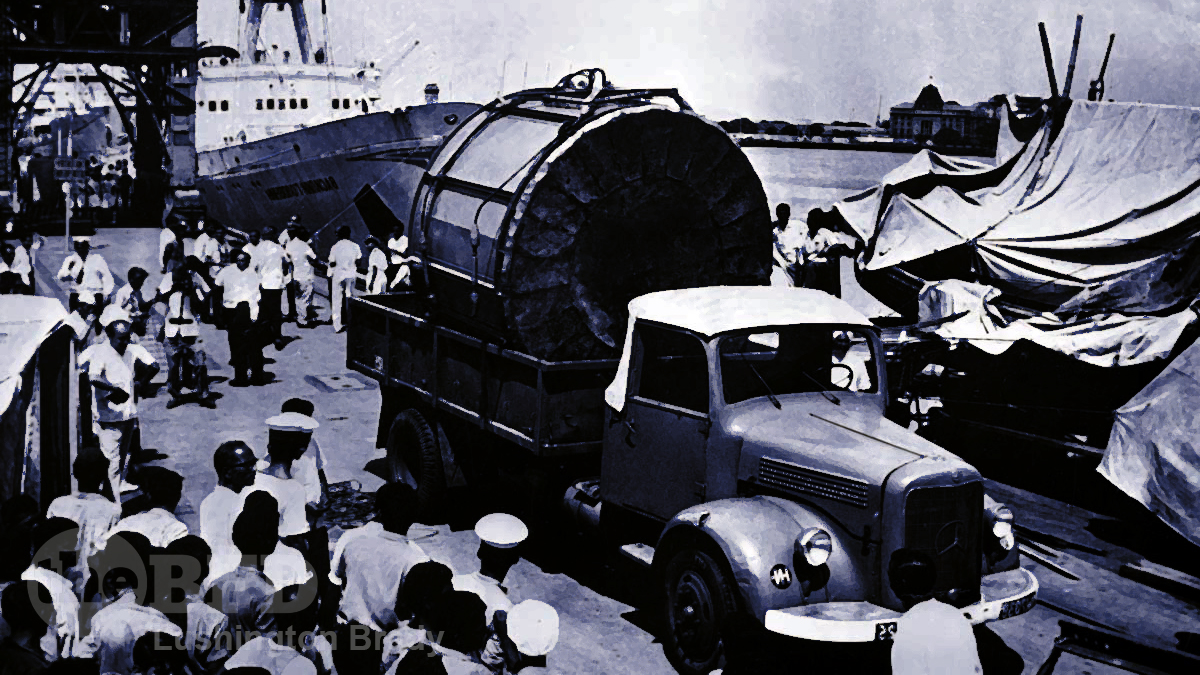We’re all familiar with Laika the dog and Ham the chimp as pioneering animal astronauts, but how many of us have heard of the Moon Tortoises?
In fact, two Russian tortoises, imaginatively named “22” and “37”, were the first Earth creatures to orbit the Moon, four months before Apollo 8.
It was part of a last-minute gambit by the Soviets to re-seize the initiative in the Space Race.
For most of the 50s, the Soviets had set the running: launching the first artificial satellite, the first probe to land on the Moon, the first man into space. But, following Kennedy’s historic 1961 speech, America had raced ahead. Mostly because the Americans had a clear goal: land a man on the Moon (and bring him home safely) before the end of the decade. The Russians, on the other hand, were unfocused, constantly readjusting mission objectives subject to the whims of the Politburo.
When the Americans launched Saturn 1, the Russians suddenly realized they had fallen behind. Khrushchev was persuaded to refocus on the Moon. But, with typical communist efficiency, the Soviets struggled. Still, the Zond programme emerged as the basis for a planned Moon-shot. But the first Zond rockets either crashed on launch or re-entry, or simply blew up.
Zond 5 became the make-or-break mission. So, to gazump the Americans, the module was designed to carry human cosmonauts. But, given the programme’s fatal record so far, it was decided to test the craft using animals.
All kinds of animals had so far been sent into space: dogs, monkeys, rats, cats, frogs, even fruit flies. But why tortoises?
As Soviet scientists noted, they weren’t actually very biologically “organisationally lower” than mammals. They certainly had the requisite complement of organs: heart, lungs liver, etc. More importantly, they don’t move around much and have a hard shell, making them easier to strap into a probe. Plus, as a species that spent long periods in a dormant state, they could easily live without food or water for a long time.
Besides, they were easy to find: the Russian tortoise (Agrionemys horsfieldii) is indigenous to the southern Kazakhstan location of the Baikonur Cosmodrome.
In all, eight tortoises were used: two as the actual cosmonauts (chelonauts?), two as a control group, the rest more-or-less as ‘spares’. After all being kept on a strict diet for two months, 22 and 27 were placed in cages on board the module. The two ‘control’ specimens were kept in identical conditions on the ground. Thus, the only physical effects felt by the intrepid 22 and 37 would be space flight.
At nearly 1am on 15 September 1968, Zond 5 blasted off. Luckily for 22 and 37, this take-off went without a hitch. Despite a minor glitch with navigational instruments, the probe went into space and to the Moon.
Three days later, Zond 5 successfully orbited the Moon. After taking photos of the dark side of the Moon, it was slung back towards Earth.
At this point, the Soviet controllers decided to mess with the decadent Western capitalists. They were well aware that the Americans were listening in on their communications so they rigged up a way of having their own voices re-broadcast from space, making it seem as if they were actually aboard the probe. They duly began talking about attempting a landing.
The Americans duly filled their pants. President Johnson got on the hotline to NASA, terrified that the US of A was about to lose the Moon race. Eventually, though, a relieved NASA figured out what was going on. America was clear to be the first men on the Moon.
Things nearly didn’t go so well for poor old 22 and 37, though. Another instrument failure shut off the re-entry system. On re-entering the atmosphere, the module experienced external temperatures of 13,000°C, while the tortoises inside were crushed by a nearly 20 G-force, more than enough to kill a human being. Eventually, the module slammed into the Indian Ocean, far away from its planned landing point in Kazakhstan.
It took the Soviet navy four days to recover the module — with its chelonian cargo miraculously alive.
For the time being.
Four days after returning to the glorious Motherland, 22 and 37 were euthanised and dissected, along with their Earth-bound crewmates. They were judged to be in excellent health – at least, prior to being killed and butchered.
And, on that probably appropriate note, ended the Soviet race for the Moon. Just ten months later, Neil Armstrong went where no tortoise had gone before.
Please share this article so that others can discover The BFD

